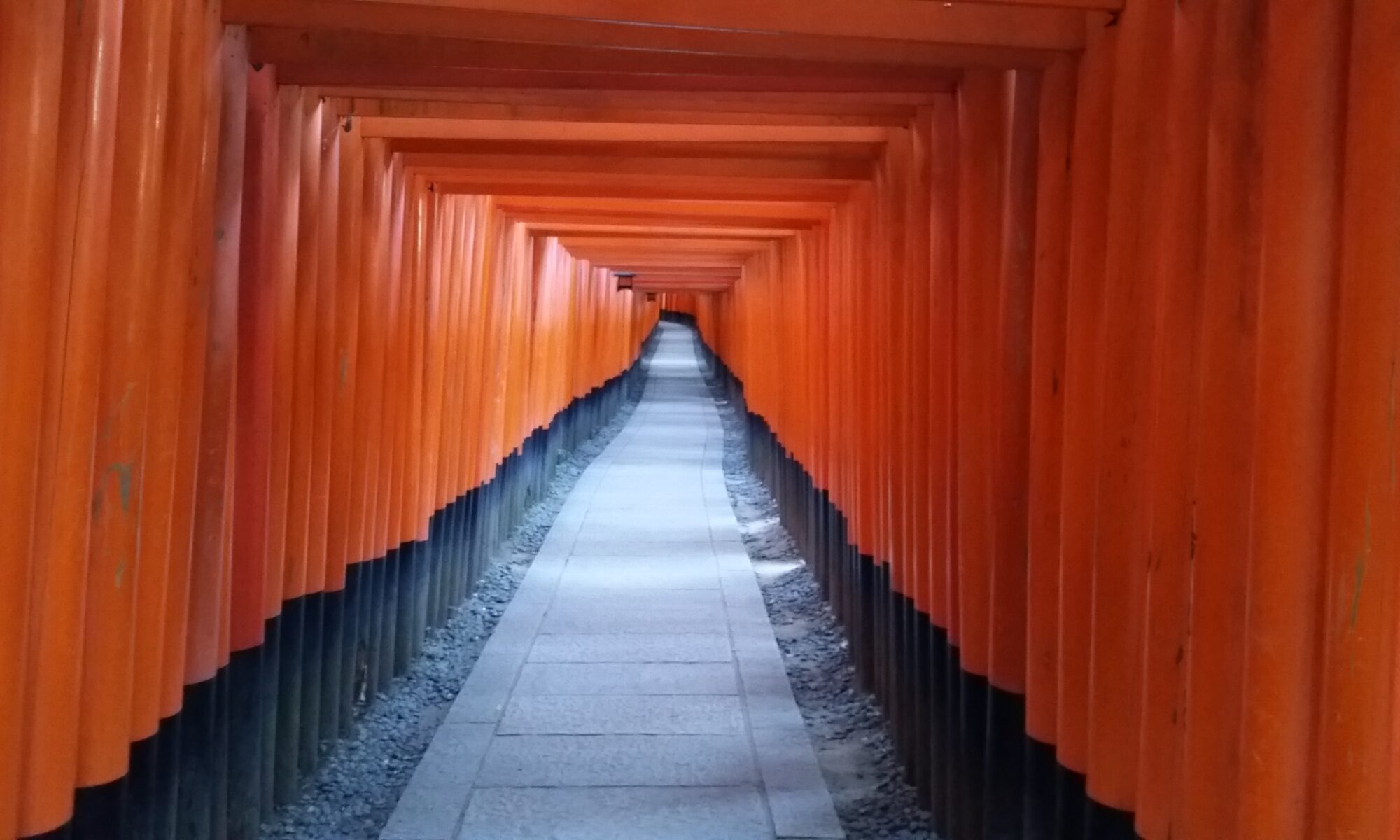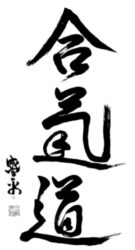O Sensei – Morihei Ueshiba, Aikido Founder
Morihei Ueshiba (植芝 盛平), commonly referred to as Kaiso (開祖 Founder) or O Sensei (大先生/翁先生 Great Teacher), was born on December 14, 1883 in Tanabe, Wakayama Prefecture. Born to a family of some prosperity, at an early age O Sensei studied Confucian and Buddhist classics in a Buddhist temple of the Shingon sect, finding particular interest in Kobo Daishi (also known as Kukai), the founder of Shingon. He completed his schooling in his late teens and acquiring skills with the abacus worked at the local tax office until 1902. He then moved to Tokyo for a short period of time, where he was first introduced to martial training in jujutsu (open hand) and kenjutsu (sword). Upon his later return that year to Tanabe, he married Hatsu Itokawa.
O Sensei enlisted in the Japanese army in 1903, and rapidly developed facility in the bayonet. He then served in the Russo-Japanese War, attracting legendary accounts of tremendous courage and skill and the nickname “Soldier Kami” (kami meaning divine spirit). Subsequently discharged in 1907, O Sensei returned to Tanabe and became involved in local politics, and continued his studies in martial arts, including Kodokan judo and the Yagyu kenjutsu. With the Japanese government’s efforts to develop the inhospitable lands of the northern island of Hokkaido, in 1912 he organized a group of settlers to inhabit an area now known as Shirataki. His efforts in transforming this barren area into a place of hope led him to be known as the “King of Shirataki.” It was during his time in Hokkaido (1915) that O Sensei met Sokaku Takeda, a renowned expert in Daito Ryu jujitsu, with whom he studied on and off over the course of years and from whom he received certificates in jujitsu. They shared a tumultuous history together, with Takeda sometimes moving in with O Sensei.
The Founder returned to Tanabe in 1919 because his father was ill. During his trip, in Ayabe he met Onisaburo Deguchi, the famous head of the new religious sect Omoto-kyo (originating from Shinto), and arrived in Tanabe after his father had passed away. He returned to Ayabe in 1920 and settled there until 1928, when he moved to Tokyo. The Founder became highly intertwined with Deguchi, and for the rest of his life was profoundly immersed in the Omoto-kyo religion. During this period with the advice and encouragement of Deguchi, O Sensei founded his school of martial arts as an expansion of his home, known as the Ueshiba Academy. He later named his art aiki-bujitsu (合気武術).
In 1924 O Sensei traveled with Deguchi to Manchuria and Mongolia to set up a holy land governed by religious precepts. The group ended up involved in intrigue with local warlords, and were led into capture by Chinese troops, imprisoned and sentenced to death. Their release was eventually secured by the Japanese government. This period was particularly impactful on O Sensei’s spiritual development.
After his return, he plunged deeper into the martial arts, including study of the spear, and developed great renown for his skills. In 1925, after defeating a Japanese naval officer in a challenge without resort to fighting, O Sensei experienced a spiritual awakening, and amidst these realizations renamed his art to aiki-budo (合気武道). He continued to attract the interest of important military personages, including an admiral who brought him to Tokyo several times. Eventually in 1930, O Sensei founded the Kobukan Dojo at the location of today’s Hombu Dojo, and his fame continued to increase. For instance, Jigoro Kano, the founder of Kodokan Judo, was so greatly impressed by O Sensei that he said “This is my ideal budo” and sent two of his chief students to study with O Sensei. In the subsequent years, O Sensei was actively sought after for instruction and demonstrations throughout Japan, and branch dojos proliferated. Notable uchi-deshi (live in students) of this time included Kenji Tomiki, Gozo Shioda and Rinjiro Shirata.
In the early years of the war, however, students of the dojo were drawn in to the war effort, and the art of aiki-budo was pulled into a broader national organization of martial arts, and became a section of that organization. It was during this period that the name aikido (合気道) began to be attached to O Sensei’s art. In 1942, as the war intensified, O Sensei and his wife retreated to Iwama in the Ibaraki Prefecture, and he brought with him the headquarters of his art. There he dedicated himself to farming and further development of his art. Practice of aikido in the Kobukan Dojo, maintained by his son Kisshomaru and Kisaburo Osawa, during the war years was permitted to occur in secret, but in the years after the war, the dojo was used to house homeless families. In 1948, restrictions on martial practice loosened, and the activities of the Aikikai were permitted to resume, and headquarters were reestablished at the Kobukan Dojo.
In the 50s, O Sensei began to travel even more extensively to share his art, which evolved continuously throughout his lifetime. His demonstration in 1956 on the top of the Takashimaya department store was the first public post-war demonstration of martial arts. Over time, O Sensei’s role in instruction at the dojo diminished. While O Sensei remained principally at Iwama, making trips in to Tokyo to teach, Kisshomaru Ueshiba and others actively worked to develop the teaching of aikido at the dojo and to spread it more widely. Among the prominent instructors of this time at Hombu were Kisaburo Osawa, Koichi Tohei, Hiroshi Tada, Sadateru Arikawa, and Seigo Yamaguchi. Morihiro Saito attended to O Sensei in Iwama.
O Sensei’s message of aikido (and budo) as an art of peace and love continued to grow. In 1961, at the invitation of Hawaii Aikikai, O Sensei visited the United States. This represented to him an opportunity to build a “silver bridge,” having dedicated himself previously to building a “golden bridge” in Japan. During the 60s, as aikido continued to proliferate, the Founder received numerous accolades and awards in Japan.
The Founder’s last public demonstration was in 1968. He attended and taught at the Kagami Biraki (meaning “opening the mirror” or “breaking the mochi” — rice cake) New Year celebration at Hombu Dojo in January 15, 1969. His health was already deteriorating by the last class he taught on March 10, and he was diagnosed with cancer. O Sensei died peacefully on April 26, 1969.
(Information adapted from sources, including Kisshomaru Ueshiba’s introduction to Morihei Ueshiba’s Budo: Teachings of the Founder of Aikido, and Mitsugi Saotome’s Aikido and the Harmony of Nature. Also see Wikipedia link for Morihei Ueshiba. Note that for convenience purposes, in this website we drop the long markings for vowels in Japanese name and terms, such as in Ō Sensei, Daitō Ryū or aikidō.)

